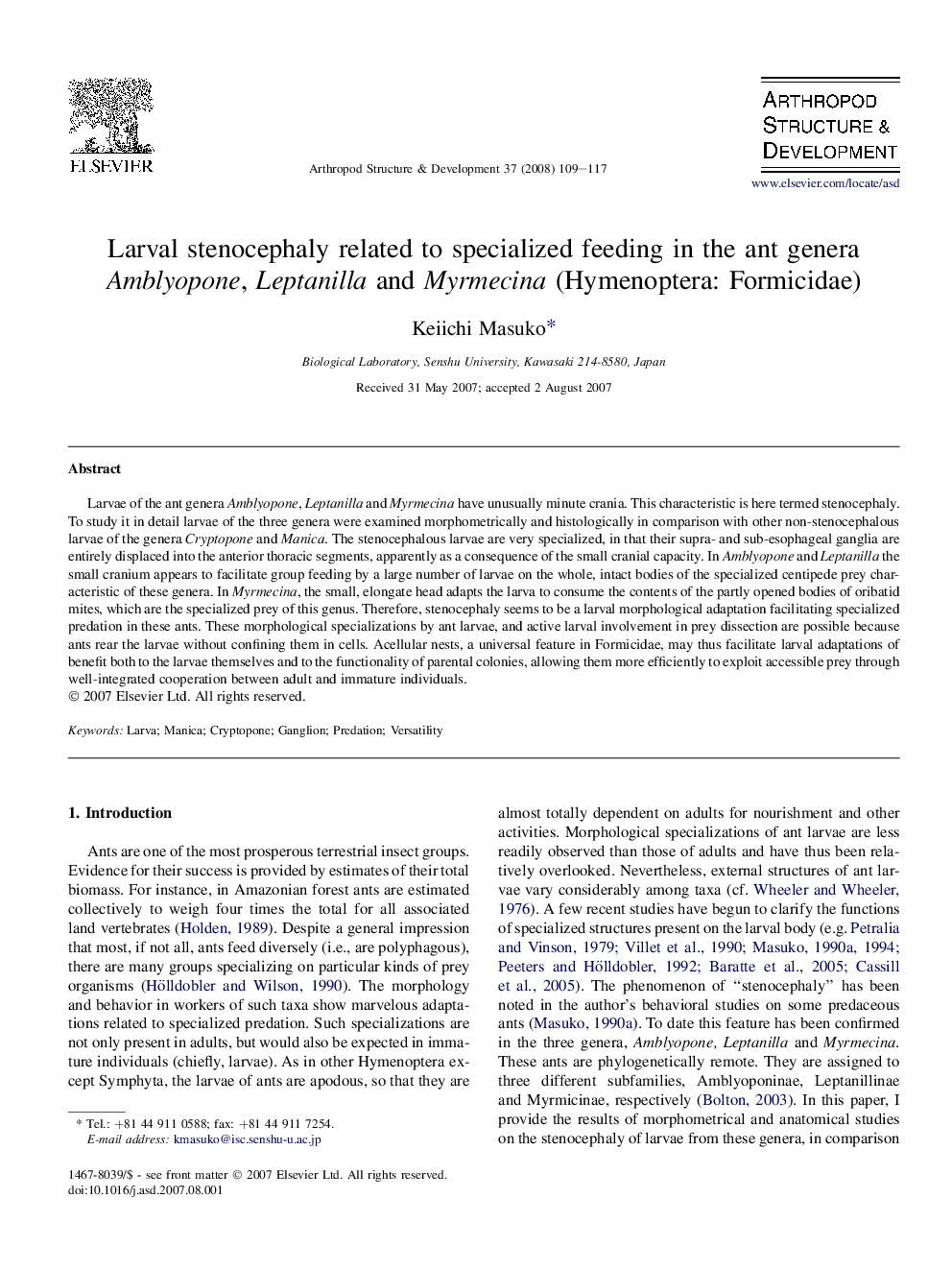| Article ID | Journal | Published Year | Pages | File Type |
|---|---|---|---|---|
| 2779059 | Arthropod Structure & Development | 2008 | 9 Pages |
Larvae of the ant genera Amblyopone, Leptanilla and Myrmecina have unusually minute crania. This characteristic is here termed stenocephaly. To study it in detail larvae of the three genera were examined morphometrically and histologically in comparison with other non-stenocephalous larvae of the genera Cryptopone and Manica. The stenocephalous larvae are very specialized, in that their supra- and sub-esophageal ganglia are entirely displaced into the anterior thoracic segments, apparently as a consequence of the small cranial capacity. In Amblyopone and Leptanilla the small cranium appears to facilitate group feeding by a large number of larvae on the whole, intact bodies of the specialized centipede prey characteristic of these genera. In Myrmecina, the small, elongate head adapts the larva to consume the contents of the partly opened bodies of oribatid mites, which are the specialized prey of this genus. Therefore, stenocephaly seems to be a larval morphological adaptation facilitating specialized predation in these ants. These morphological specializations by ant larvae, and active larval involvement in prey dissection are possible because ants rear the larvae without confining them in cells. Acellular nests, a universal feature in Formicidae, may thus facilitate larval adaptations of benefit both to the larvae themselves and to the functionality of parental colonies, allowing them more efficiently to exploit accessible prey through well-integrated cooperation between adult and immature individuals.
